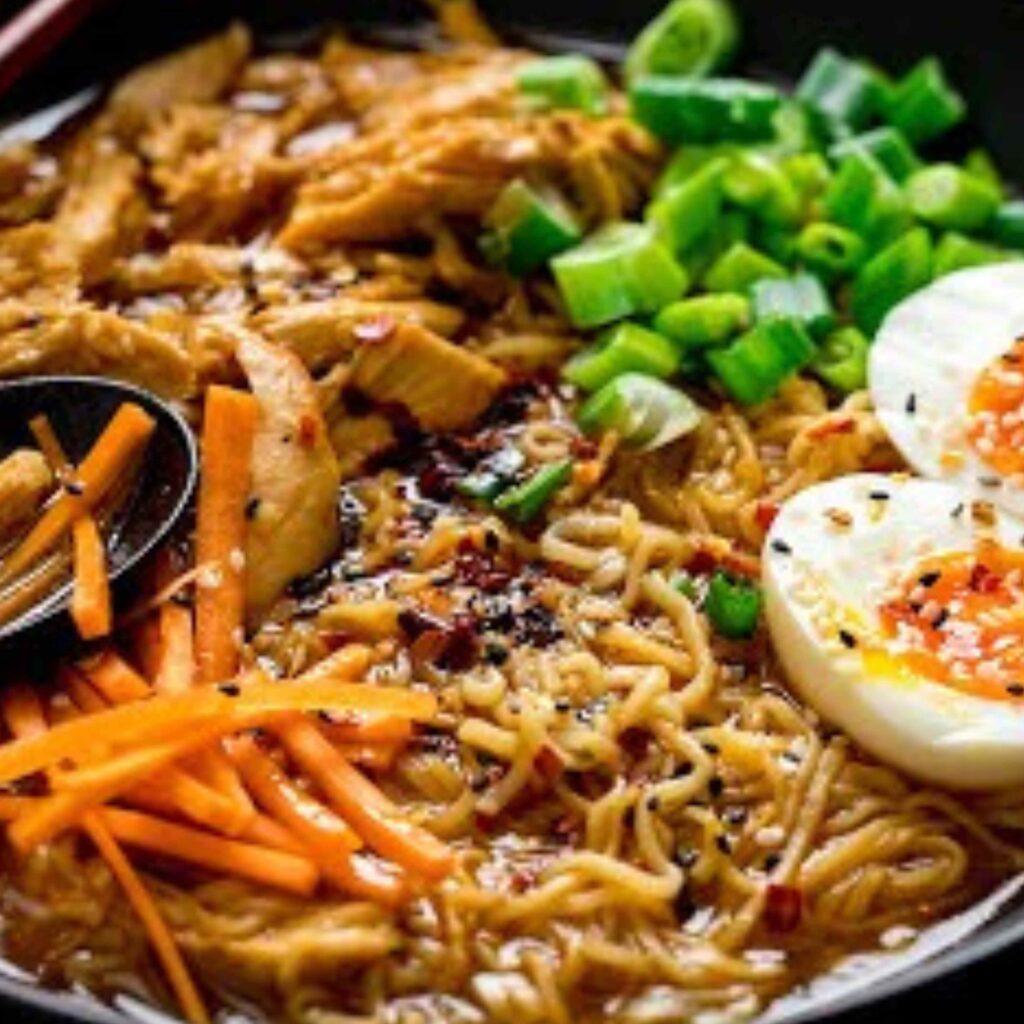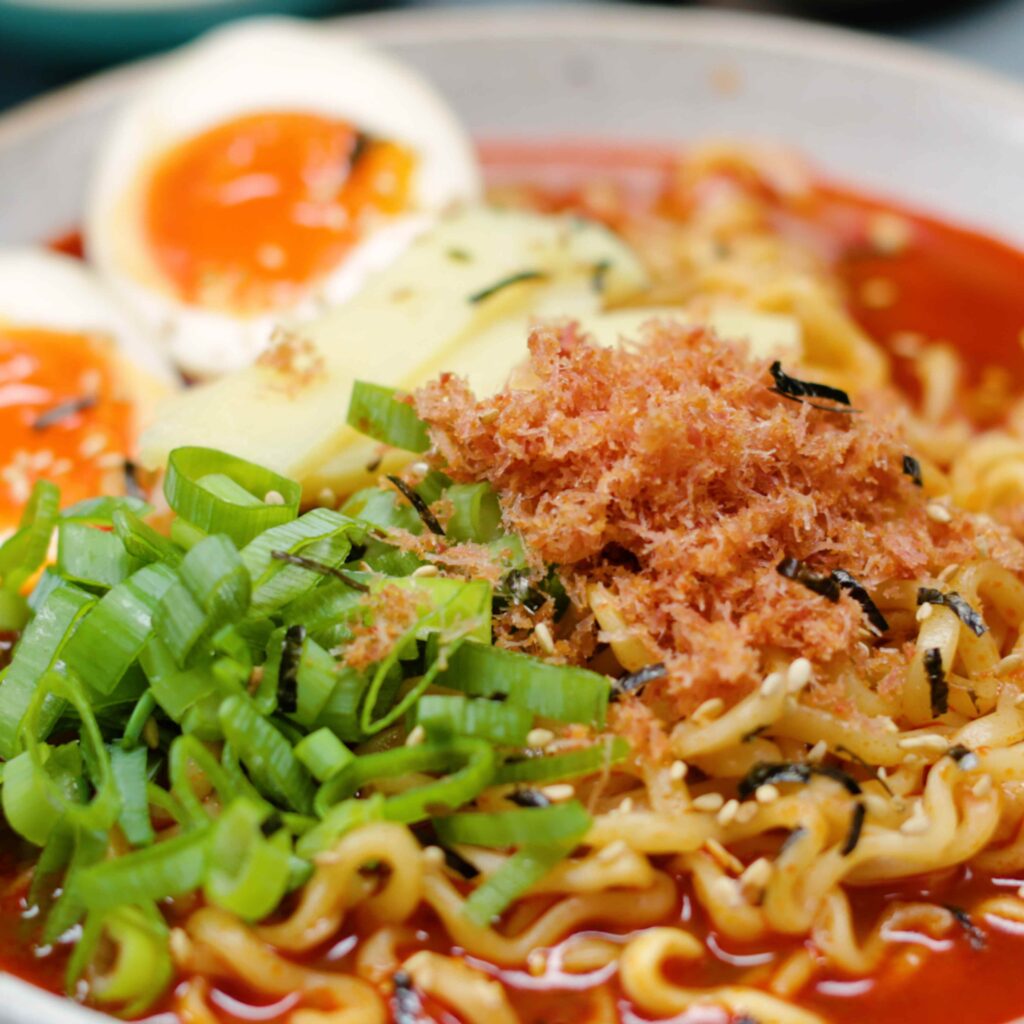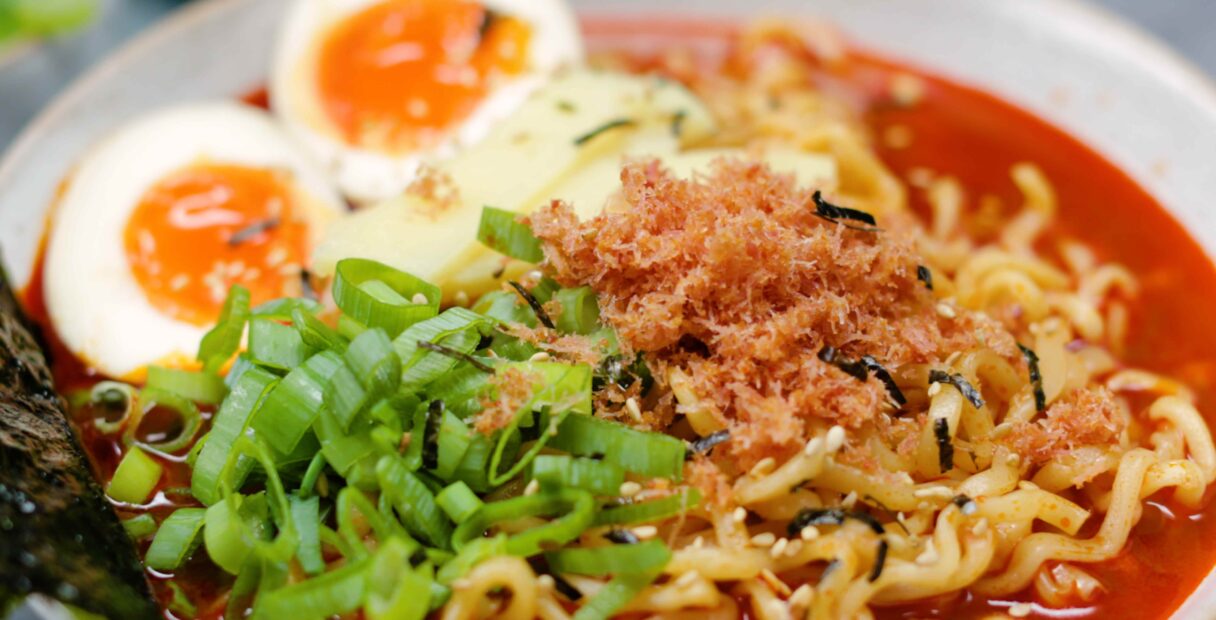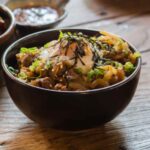

Ramen: Japan’s Noodle Symphony
Introduction
Ramen, a soul-warming and beloved Japanese dish, beckons you to savor the flavors of Japan’s rich culinary heritage. This iconic comfort food, featuring noodles in a savory broth, has a history as flavorful as its ingredients. In this article, we embark on a journey to explore the intriguing history and cultural significance of Ramen, a culinary masterpiece celebrated for its versatility and heartiness.
Japanese Roots
A Dish from the Far East
Ramen has its origins in Japan, but its roots can be traced back to China. The dish made its way to Japan in the late 19th century through Chinese immigrants, and over time, it evolved to suit Japanese tastes and preferences. The name “Ramen” is derived from the Chinese words “la mian,” which mean hand-pulled noodles.
Mediterranean Influence
A Taste of Japanese Innovation
Ramen embodies the essence of Japanese cuisine, known for its use of high-quality ingredients and constant innovation. The dish typically consists of Chinese-style wheat noodles served in a flavorful broth, often made from ingredients like pork, chicken, or seafood. It can be customized with a variety of toppings, such as sliced chashu pork, soft-boiled eggs, seaweed, and green onions, allowing for endless variations to suit individual tastes.
Cultural Significance
A Dish of Nourishment and Comfort
Ramen is more than just a meal; it is a symbol of Japanese culinary creativity and a source of comfort. It is often enjoyed in ramen shops, which can be found throughout Japan, each with its unique regional style and specialty. Ramen serves as a comforting and satisfying dish, perfect for a quick lunch or a late-night meal, reflecting the versatility and adaptability of Japanese cuisine.
Conclusion
In conclusion, the history of Ramen is a captivating journey through the culinary traditions of Japan. From its Chinese origins to its status as an international symbol of Japanese comfort food, Ramen continues to captivate with its rich history and cultural significance. Its journey from the streets of Japan to dining tables around the world showcases the timeless allure of this hearty and versatile Japanese classic.
For those eager to explore more about Ramen and its regional variations, there are dedicated culinary resources and studies of Japanese cuisine that offer deeper insights into this cherished culinary masterpiece.
- Serves: 2 People
- Prep Time: 10 minutes
- Cooking: 20 minutes
- Difficulties: medium
Ingredients
For Cooking
- 2 packs of Ramen noodles
- 4cups chicken or vegetable broth
- 2 tablespoons soy sauce
- 1 tablespoon mirin
- Sliced chashu pork or chicken, for topping
- Soft-boiled egg halved
- Sliced green onions, for garnish
- Nori seaweed, for garnish
For Dressing
Nutritional Information
-
Calories:
400 -
Total Fat:
15g -
Saturated Fat:
5g -
Cholesterol
: 150mg -
Sodium
: 1200mg -
Total Carbohydrates:
50g -
Dietary Fiber:
2g -
Sugars:
3g -
Protein
: 18g
Procedure
Conclusion: Ramen is more than just a meal; it’s an experience that warms the body and soul. With this guide, you’re equipped to create the classic Shoyu Ramen or embark on a culinary adventure by exploring variations that reflect your palate’s preferences. From delicate noodles to flavorful broths, Ramen embodies a harmonious balance of textures and tastes that make every bite a delight.
-
Mark As Complete
Bring the broth to a gentle simmer, then stir in soy sauce and mirin.
-
Mark As Complete
Cook the Ramen noodles according to package instructions, then drain and rinse under cold water.
-
Mark As Complete
Divide the noodles into serving bowls.
-
Mark As Complete
Pour the broth over the noodles.
-
Mark As Complete
Top with chashu pork or chicken slices, soft-boiled egg halves, sliced green onions, and torn nori seaweed.
Dawood Ali Mian
Chef Dawood brings a wealth of experience and a diverse culinary background to our kitchen. His culinary training spans the globe, from classic French techniques to contemporary fusion cuisine. Drawing inspiration from both traditional and modern culinary traditions, Chef Dawood’s creations are a harmonious blend of flavors and textures that tantalize the palate.
You also might like
No recipe were found.




